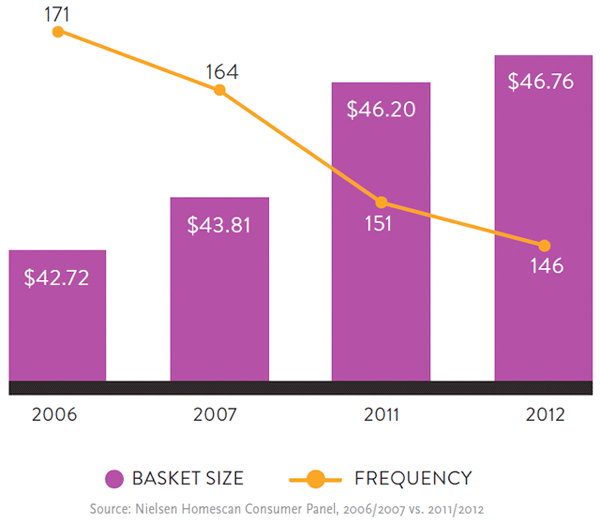Continual Innovation: The Key to Stand Out and Win in Retail
January 13, 2014
![]() The need to differentiate from the competition is as great as it has ever been. While global consumer confidence was flat in third-quarter 2013 from the previous quarter, confidence was on the rise in over half of the countries Nielsen surveys, including the U.S. Still, many shoppers remain focused on value for their money. At the same time, e-commerce has attracted a growing number of users. Innovation, however, can give retailers the all-important edge.
The need to differentiate from the competition is as great as it has ever been. While global consumer confidence was flat in third-quarter 2013 from the previous quarter, confidence was on the rise in over half of the countries Nielsen surveys, including the U.S. Still, many shoppers remain focused on value for their money. At the same time, e-commerce has attracted a growing number of users. Innovation, however, can give retailers the all-important edge.
The urgency for retailers to innovate is nothing new. Getting ahead has always been a struggle in this fiercely competitive field, where similar products and store density can easily lure shoppers away. And the recent recession has made that battleground even more intense.

Today’s consumers have more retail choices than ever but are cutting back on their overall purchases. According to the Continuous Innovation: The Key To Retail Success report, trip frequency in the U.S. has fallen 15 percent over the last six years, while basket size has climbed only 9 percent. And we’ve seen similar trends around the world. For stores to beat the competition, they need to encourage consumers to increase the number of trips, grow the size of their basket, or both.
Where to Innovate?
Retailers have several avenues to reach shoppers in new ways based on need—convenience, choice (or assortment), shopability, price value and even promoting the brand outside the store. Innovations in these categories all make the shopping experience easier, faster, or better for consumers, encouraging them to make more trips and buy more.
- New ideas in convenience make the shopping experience faster and easier for the customer to find what they need but can go further to leverage consumer data to predict purchases and replenish needs.
- Assortment innovations vary experiences by shoppers and their missions, creating the feeling of a justified trip.
- Shopability helps retailers sell by helping consumer buy. Creative brands are adding new reasons for store visits, including coffee shops, mini-bank branches or pharmacies to keep shoppers in the store longer and buying more. But they’re also making it easier to make purchases, with sell-scanning tills or check-outs.
- Price value remains the key to many shopper buys. Retailers have many tried and true ways to promote their low prices with consumers—through loyalty programs, sales, price guarantees, etc. However, new routes await, including cross-category subsidizations that can reduce overall shopper costs. Also, recent research shows that many global shoppers would spend more on private-label goods if given the choice.
- Outside the store, many retailers have stretched their brand in innovative ways, including extra services like car washes and valets, and even supporting volunteer efforts.
In addition, while e-commerce has often been portrayed as a threat to traditional brick and mortar stores, some of the most successful innovators in retail have leveraged online to meet the needs of their 24/7 shoppers. Today’s consumers live, work and shop in a digitally integrated world. The Internet holds the promise of changing the landscape entirely, and retailers must at least keep up—and ideally get ahead.
Innovation persuades shoppers to do something different: to buy, to try, to move, to change. For a brief time, it captures consumer attention, bringing in new customers or improving existing ones’ loyalty. But newness wears off quickly and copy cats can easily reproduce many retailers’ ideas. To stay ahead, stores must continually develop new ways to capture consumers’ interest.




























